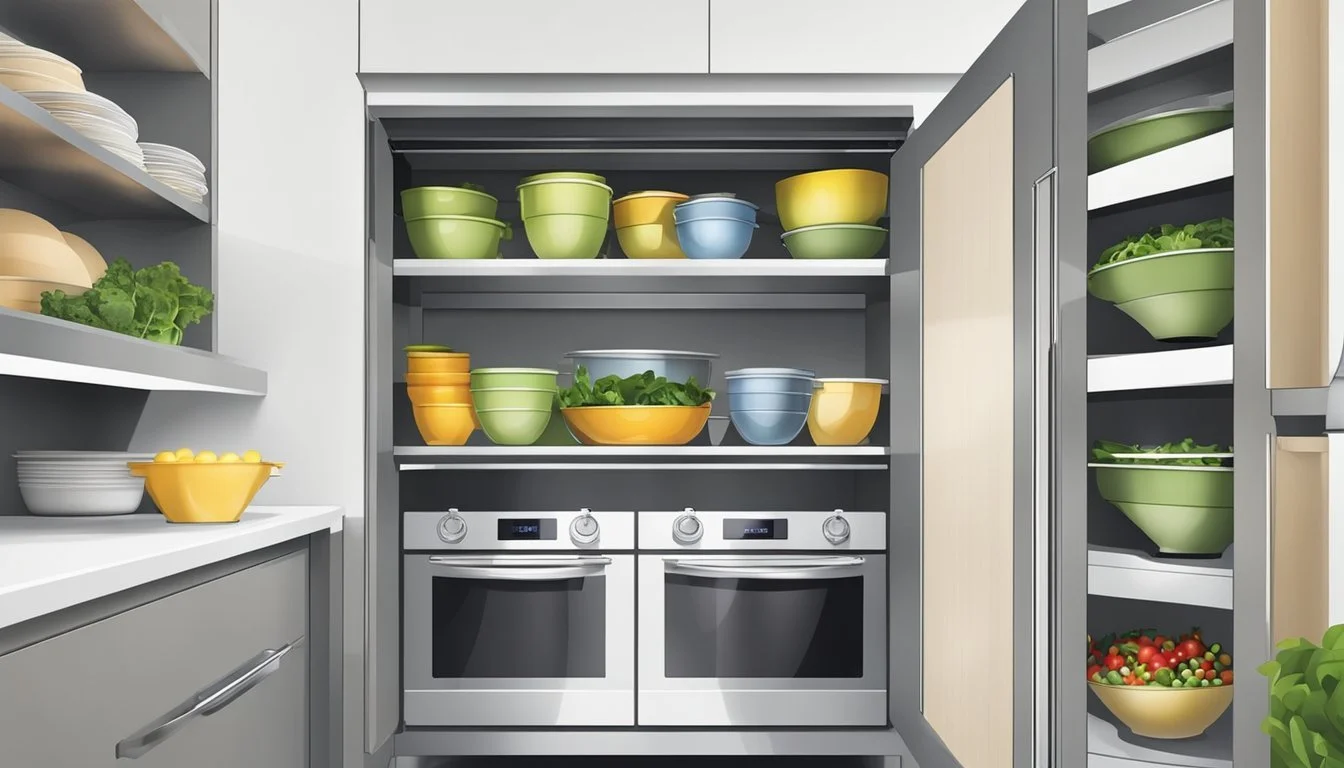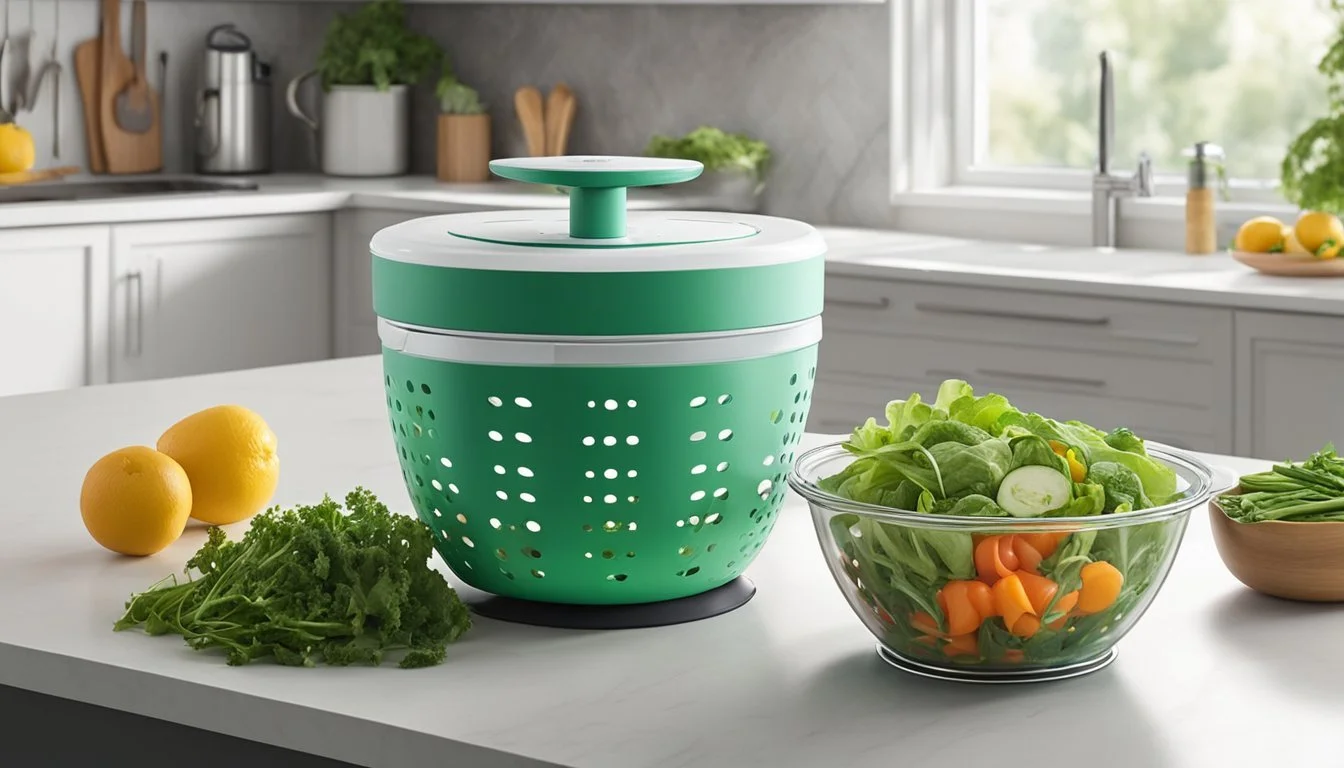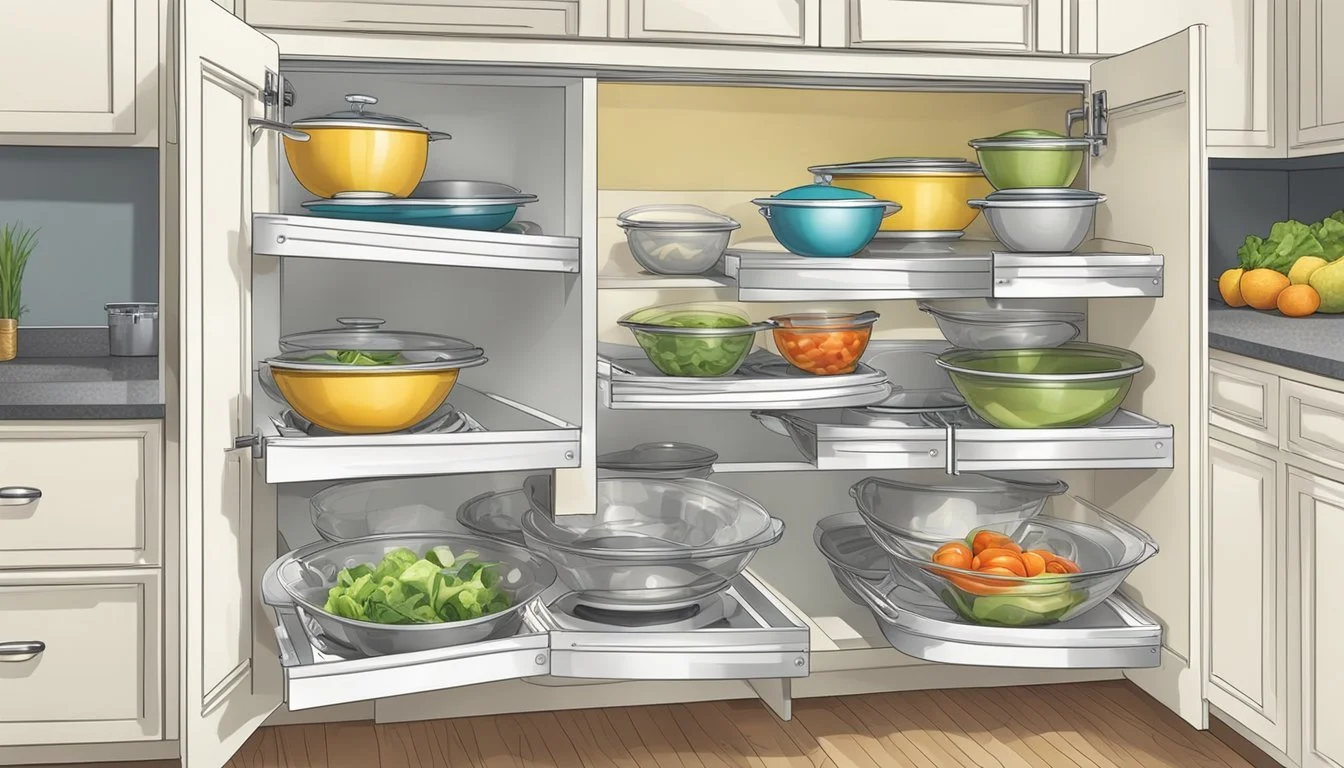The Best Way to Store Your Salad Spinners and Colanders
Space-Saving Solutions
Salad spinners and colanders are essential kitchen tools for any home cook who enjoys fresh salads or needs to drain pasta and washed vegetables with ease. Storing these items effectively ensures they are readily accessible and in good condition, ready for their next use. Proper storage is not only a matter of convenience but also a way to extend the lifespan of the equipment by preventing damage and maintaining hygiene.
When it comes to salad spinners, they are particularly adept at drying lettuce and other greens quickly and efficiently. However, their size and the multiple parts can make them a bit cumbersome to store. It is important to keep them clean and dry to prevent the growth of bacteria and mold. They should be stored in a dry place where the basket is not compressed to maintain its shape and effectiveness.
Colanders, on the other hand, are more straightforward in terms of storage due to their typically sturdy construction and simple design. Despite this simplicity, they still require attention to ensure they are stored in a way that prevents warping and contamination from other kitchen tools. Given their versatile use, from draining boiled foods to rinsing vegetables, having a colander in prime condition is key to an efficient kitchen workflow.
Essentials of Salad Storage
Storing salad greens properly ensures longevity, freshness, and taste. Effective moisture control, appropriate containers, and understanding the role of salad spinners and colanders are vital.
Understanding Salad Spinners and Colanders
Salad spinners play an essential role in salad storage as they effectively remove excess water from leafy greens through centrifugal force. A colander simply drains water but does not perform this additional spin function. By removing excess moisture with a salad spinner, one can prolong the freshness of lettuce and other salad greens, preventing spoilage caused by dampness.
The Importance of Moisture Control
Proper moisture control is crucial to keeping salad greens fresh for a longer period. Leafy greens should be lightly damp, not wet, when stored. Introducing a dry paper towel into the storage container can absorb excess moisture, and this practice can help maintain the necessary balance to prevent the greens from becoming slimy or wilting.
Too wet: Greens can become slimy.
Too dry: Greens may wilt and dry out.
Ideal: Salad greens are stored with a paper towel to absorb excess moisture.
Selecting the Right Containers for Freshness
Choosing the right container for storing salad greens can greatly impact their shelf life. Airtight containers can trap in moisture leading to quicker spoilage, while containers allowing for a bit of airflow can extend a salad's freshness. When placing greens in the refrigerator, one may opt for a plastic bag with holes or a storage container with a loose-fitting lid, always ensuring there is space between the greens and the container to avoid trapping excess moisture.
Recommended containers:
Plastic bags with holes for airflow
Storage containers with loose-fitting lids or vents
Using the provided information effectively can lead to a significant extension in the life and quality of salad greens. Salad enthusiasts can enjoy fresh, crisp salads by following these essentials of salad storage.
Preparation Before Storage
The longevity of salad greens and vegetables greatly depends on proper washing and drying—a crucial step before storage. Proper technique ensures food remains crisp and extends its freshness.
Washing and Drying Salad Greens
One should wash their greens in cool water to remove any dirt or possible contaminants. After thoroughly washing, it's essential to dry the greens completely as excess moisture can lead to rapid spoilage and a less than ideal texture. Salad lovers often use salad spinners to achieve dry lettuce, as the device is designed to efficiently remove water while keeping the greens crisp.
Steps for washing salad greens:
Rinse under cool running water.
Check for and remove any wilted or damaged leaves.
Gently shake off excess water.
Drying method:
Use a salad spinner after washing to ensure all excess water is removed.
Alternatively, lay the greens out on a clean kitchen towel or paper towels and pat dry.
Using Salad Spinners Effectively
A salad spinner operates by centrifugal force, which is highly effective for expelling water from washed greens. Here are detailed steps for using a salad spinner to ensure prepared veggies and greens stay at their peak for storage:
Steps to effectively use a salad spinner:
Place washed greens in the basket of the salad spinner.
Secure the lid and spin the handle or press the button, according to the spinner's design.
Pause to drain accumulated water from the bowl as needed, then continue spinning.
Repeat the process until no significant water can be seen exiting the greens.
For best results, spin in batches if the volume of greens is large to avoid overcrowding, which can lead to ineffective drying and potential bruising of delicate leaves. It is recommended to store the greens in a sealed container or plastic bag with a paper towel to absorb any remaining moisture after spinning, ensuring the longevity of salads and making meal prep more convenient.
Storing Techniques for Salad Equipment
Proper storage of salad equipment, such as colanders and salad spinners, extends the item's life and ensures its ready for its next use. Attention to detail in maintenance and care can significantly improve the performance and hygiene of these kitchen tools.
Best Practices for Colanders
Placement: Store the colander in a dry cupboard to prevent rusting. If it nests well, it can be stored with other similar-sized bowls or pots.
Accessibility: Keep the colander in an easily reachable location, as it is a frequently used item for rinsing vegetables or draining pasta.
Salad Spinner Maintenance and Care
Cleaning: After use, it is important to clean the lid, basket, and outer bowl with warm, soapy water to remove any food residue and then dry thoroughly.
Storage: When not in use, salad spinners should be stored with the basket inside the outer bowl and the lid placed on top to keep dust and other contaminants out. If space is a constraint, the spinner can double as a storage container for other kitchen essentials.
Proper Salad Storage in the Refrigerator
Proper storage techniques are essential for maintaining the nutrition and freshness of salad greens. Ensuring optimal placement in the fridge and creating ideal humidity conditions will prolong the shelf life of leafy greens.
Optimal Placement in the Fridge
To store salad greens properly, one should leverage the design of their fridge. The crisper drawer is specifically engineered for storing perishable produce like lettuce. It separates the salad from other foods, providing the necessary space needed for air circulation.
Temperature: Keep the fridge temperature set between 36°F to 40°F (2°C to 4°C).
Location: Place greens away from the back of the fridge to avoid freezing.
Separation: Store salads away from ethylene-producing produce to prevent premature spoiling.
Creating the Ideal Humidity Conditions
The crisper drawer's adjustable humidity settings allow for customization to accommodate different types of produce. Salad greens thrive in a high humidity environment. Keeping the drawer's humidity setting high helps sustain the greens' moisture without making them soggy.
Humidity Control: Set the crisper drawer to a high humidity level.
Paper Towels: Use paper towels to line the container or bag holding the greens, which absorbs excess moisture and delays the wilting process.
Airtight Containers: If available, use airtight containers or resealable bags to isolate the salad, preventing odor absorption and dehydration.
Extending Salad Longevity
Proper storage techniques are crucial for maintaining the crunch and freshness of salad greens, preventing wilting and spoilage. Using paper towels is a simple yet effective method, and awareness of common mistakes can enhance food storage practices.
Preserving Freshness with Paper Towels
Use Paper Towels: They place paper towels between layers of greens or inside the storage bag.
Absorb Excess Moisture: Paper towels absorb moisture that can cause rot and spoilage.
Replace Regularly: Experts suggest changing paper towels daily for optimal freshness.
Avoiding Common Mistakes
Avoid Excess Moisture: They ensure greens are completely dry before storage to prevent spoilage.
Store Smartly: Food storage specialist Samantha Chamberlin advises not to store greens in airtight containers as trapped ethylene gas can accelerate decay.
Maintain Air Circulation: A salad spinner's basket allows air to circulate around the greens, extending their freshness.
Additional Tips and Tricks
To make the most of salad spinners and colanders in meal prep, it's crucial to consider how fresh herbs and salad dressings can affect both the flavor and shelf life of salads. Proper storage can significantly extend the freshness and nutritional value of these ingredients.
Utilizing Fresh Herbs and Salad Dressings
Fresh Herbs: When adding herbs to salads, one should use them in moderation to avoid overwhelming the other flavors. It's advisable to store fresh herbs in a damp paper towel and seal them in a plastic container to maintain their freshness. This method helps to preserve the vitamins and minerals that herbs contribute to a salad.
Salad Dressings: To keep salads crisp during meal prep, it's best to store dressings separately until right before serving. Dressings should be kept in airtight containers to prevent spoilage. One should always check the expiration date on store-bought dressings, whereas homemade dressings typically have a shorter shelf life and should be used within a few days.
Understanding Expiration and Shelf Life
Expiration Date: The shelf life of a salad can be influenced by the freshness of its components at the time of assembly. It is important to check the expiration dates on pre-packaged salads and their separate ingredients. Salads containing animal proteins or dairy should be consumed more quickly to avoid potential foodborne illnesses.
Shelf Life: Proper storage can help to mitigate the risk of mold and extend the shelf life of salads. Spinners and colanders can remove excess moisture, which is a key step in preventing spoilage. Plastic containers should be clean, and if used for storage, they must be sealed tightly to keep out air and contaminants. One can increase the storage time by refrigerating salads at temperatures below 40°F (4°C).
Shopping and Selection Strategies
When shopping for salad ingredients, customers should prioritize freshness and quality to ensure the best outcome. The selection of greens and vegetables, along with the decision between pre-packaged and fresh produce, can significantly affect the end result of the salad.
Choosing the Best Salad Greens and Vegetables
One should look for salad greens that exhibit vibrant colors and crisp textures, as these are indicators of freshness. Preferences might vary from soft butter lettuce to peppery arugula, but regardless of the type, the greens should be free of wilting or yellowing leaves. A tactile inspection is advisable, ensuring the leaves are firm and not slimy, which suggests spoilage.
Customers should also inspect vegetables closely; for instance, cucumbers should be firm without any soft spots, and bell peppers need to have taut skin. If available, samples of greens like baby spinach or microgreens can also be tasted for flavor quality right at the grocery store. Ensuring the absence of grit is important, as this affects both the texture and the overall enjoyment of the green salad.
When to Opt for Pre-Packaged vs Fresh Produce
Pre-packaged greens can offer convenience with their ready-to-eat status and often come pre-washed which might save time. However, they may not always be as fresh as the unbagged options and can carry a premium price. When considering pre-packaged options, one should check the "use by" date and inspect the package for excess moisture or damaged leaves, which can lead to quicker deterioration.
For fresh produce, customers might find a broader selection of salad greens and veggies, which allows for creating a more customized salad. The advantage here is that one can buy the exact amount they need, reducing waste. In purchasing loose greens, it’s critical to wash them thoroughly to remove any remaining dirt or grit.
In both cases, buyers should factor in their immediate need and the shelf-life of the produce to make the best choice according to their salad consumption habits.







